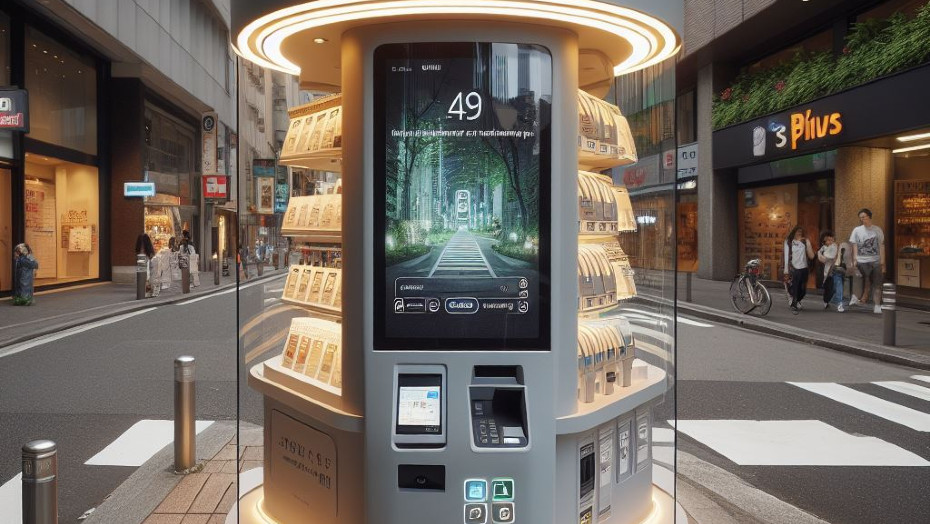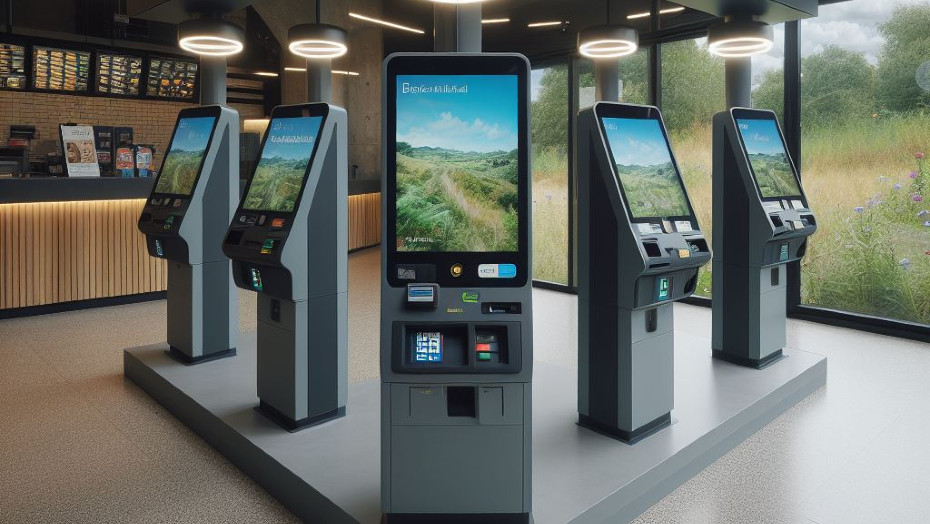Some interesting and probably useful stuff to read. Welcome! 😉
Categories
Featured article
Practical gadgets to make everyday life easier
As technology evolves, so do people’s everyday lives. From smart home devices to gadgets, a wide range of practical gadgets can make everyday life easier. With these gadgets, people no longer rely on mundane or time-consuming tasks. Instead, they can use these gadgets to automate various tasks and make their lives more efficient. This article will look at some practical gadgets that make everyday life easier.
Smart home devices

Smart home devices are among the most useful gadgets that make everyday life easier. These devices are designed to make it easier to control and manage your home appliances and systems. Smart home devices include everything from security systems to voice-controlled speakers and lights. They can control your home’s temperature, monitor energy consumption, and even give voice commands to your devices.
Smart home devices are a great way to automate tasks and make your home more efficient.
Robot vacuum cleaner

A robot vacuum cleaner can be a practical gadget for everyday use, as it can save time and effort when cleaning your home. Its autonomous nature allows it to work according to your schedule and mop your floors regularly without any extra effort on your part.
One of the main advantages of using such a gadget is its convenience. You can set it to clean when you are away, whether at work or on business, and return to a clean house. Gadgets can be handy for people with busy lifestyles who may need more time or energy to clean their homes as often as they would like.
Practical gadgets – stylish accessories

Practical gadgets that make everyday life easier and serve as stylish accessories are another popular choice. These gadgets are designed to be worn on the body, help track health, and even pay for goods.
The most popular gadgets are the smart watch, the sports watch, and the smart sports bracelet. With these devices, you can easily monitor your health, receive notifications and even pay for goods without carrying a wallet or purse.
Wireless phone charger

The wireless phone charger is a practical gadget that allows you to charge phone without physically connecting it to a charging cable. Instead, the phone is placed on a charging pad that uses wireless charging technology.
Wireless charging can make charging your phone more convenient, as there are no wires to plug in, but it can also be slower than traditional phone charging. However, if you spend much time on the road, this gadget will be handy and make your daily routine easier.
Wireless earphones

Wireless earphones have no connecting cables and connect to the audio source via Bluetooth or similar wireless technologies. They usually come with a charging case, which also conveniently stores and transports the headphones when not in use.
Wireless earphones are becoming increasingly popular as a compact and convenient gadget that makes everyday life easier for everyone who uses it. They allow greater freedom of movement and are ideal for exercise, jogging, or commuting. They also have many features, such as noise cancellation, voice assistants, and touch control.
Smart water bottle

A smart water bottle can be a practical gadget for everyday use as it helps ensure enough water consume during the day. It has sensors and technology that track your water consumption and remind you to drink more.
One of the main benefits of using a smart water bottle is that it helps to increase water consumption, which is essential for overall health and well-being. Many smart water bottles have an app that allows you to set daily hydration goals and track your progress. Some even have a built-in LED light that reminds you to drink more water. You can buy smart water bottles like these at UDENSPUDELE.LV
Gadgets have become an integral part of everyday life, and a wide range of practical gadgets can make everyday life easier, from smart home devices to gadgets as accessories. With these gadgets, everyone can automate tasks and make their lives more efficient.
Take a look at other interesting and useful articles on our blog, such as Fun group activities for parties or How to motivate millennials in the workplace.
Latest articles
Launching Your SEO Career – Tips for Success
In the digital marketing landscape, search engine optimization (SEO) has become a mainstay that is indispensable for businesses looking to improve their online visibility. For passionate izaugsmesforums.lv stakeholders who want to develop personally and professionally, starting an SEO career opens the path to growth, innovation, and continuous professional development.
This article will be helpful for students and aspiring SEO professionals, guiding what is essential for a successful career in SEO. We will introduce you to actionable strategies to help you stand out in the competitive SEO job market.
Building strong online presence – your SEO career
In SEO, your online presence is your CV. Start by creating a professional LinkedIn profile that lists your skills, projects, and endorsements from colleagues or mentors. Create a blog or website dedicated to your SEO practice and learning, and it can serve as a living portfolio showcasing your ability to evaluate the content and optimize digital platforms.
Actively engage with social media platforms relevant to the SEO community, such as Twitter and LinkedIn. Share your insights and connect with industry leaders.
Practical steps to stand out online:
- Create a niche-oriented blog: Specialize in an area of SEO you like, such as local SEO, e-commerce optimization, or content marketing. This focus can help you become a leader in that niche.
- Show your projects: Whether it’s a website you’ve helped rank or an SEO audit you’ve conducted, documenting these projects with before and after data demonstrates your expertise.
- Get involved in the SEO community: Join SEO forums, participate in Twitter chats, and attend webinars or virtual conferences. Your active participation shows your commitment to the field.

Networking with industry professionals – building meaningful relationships
Networking in SEO is about more than just collecting business cards or LinkedIn contacts. It’s building genuine relationships that can provide support, mentoring, and opportunities.
Connect with experienced professionals at industry meetings, conferences, and seminars. Offer value in your interactions by sharing some interesting research you have done or asking in-depth questions.
Strategies for effective networking:
- Use LinkedIn: Send personalized connection requests to industry professionals you admire, briefly stating why you are interested in connecting.
- Volunteer at SEO events: This can be a great way to meet people and show enthusiasm for the field.
- Write and share valuable content: Writing or publishing case studies can attract industry leaders’ attention and open doors for conversations.
Continuous learning and updating – maintaining SEO career
SEO is dynamic, as search algorithms and best practices are constantly evolving. To stay relevant, commit to a lifetime of learning.
Follow industry blogs, subscribe to SEO newsletters, and take online courses to deepen your knowledge and skills. Sites such as Moz, Search Engine Journal, and working for an SEO agency offer many resources to help you keep up to date with SEO trends and techniques.
Increasing your SEO knowledge:
- Attend webinars: They can provide in-depth insights into specific SEO topics and trends.
- Certifications and courses: Get certified by Google, Moz, or SEMrush to increase your skills’ credibility.
- Experiment: The best way to learn SEO is by doing. Test different strategies and analyze the results to gain practical insights.
Standout resume and preparing for interviews
Your CV should reflect your knowledge of SEO, projects, and results. Highlight specific achievements, such as increasing website traffic by a certain percentage or improving the position of landing pages.
Tailor your CV to each job application, highlighting the skills and experience most relevant to the role. Prepare for common SEO interview questions.
Be prepared to discuss your approach to SEO problems, the tools you know how to use, and the successful projects you have worked on. Demonstrating your analytical thinking and problem-solving skills can make you stand out.

What’s trendy in SEO?
Voice search optimization, artificial intelligence in SEO optimization, and mobile-first indexing are trends changing the SEO landscape. Please look at these trends and consider how they impact SEO strategies. Knowledge of current innovations prepares you as a forward-thinking candidate for the future of SEO.
SEO – process of constant growth
For the ambitious employees of izaugsmesforums.lv, starting a career in SEO is a professional choice. It is a journey of continuous growth, learning, and adaptation.
By building a solid online presence, networking effectively, and keeping your skills current and up-to-date, you position yourself as a valuable resource in the dynamic world of SEO. Remember, SEO success isn’t just about understanding search engines – it’s about understanding people, their queries, and how to connect them with the answers they’re looking for.
Please check out these articles although:
Gifts for an active man
To find good gifts for an active man, you need to understand their active lifestyle – his hobbies and favorite sports. Whether he’s an avid runner, gym enthusiast or outdoor adventurer, the right gift can motivate him and ensure he’s up for any challenge.
In this article, we will look at how to choose gifts for an active man, as well as provide insight into the selection of some gift ideas.
How to find a good gift for an active man?
Finding gifts for an active man can be an exciting, yet challenging process. This is the time to find good and useful gifts that not only match his passion for physical activities, but also improve his performance and make him happy.
A good balance needs to be found when it comes to understanding his specific interests – running, cycling, weightlifting or adventures like hiking and boating, for example. And then, before looking for the right gift, it is important to understand the direction in which to look for that gift. We have prepared tips for this below.
So, the main steps that will help you find a gift are as follows:
- Understand his interests – explore the specifics of his activities. Does he do a particular sport or different ones? By understanding the nuances of his interests, you will be able to choose more valuable gifts.
- Think about his needs – think about what he might need or what could improve his sporting activities. Maybe he needs better gear, more advanced equipment, or something to help improve his health.
- Quality is more valuable than quantity – choose high-quality products that can withstand frequent use. Durable, reliable products from recognized brands will be more appreciated and will last longer.
- Consider innovative technology – for the active, tech-savvy person, consider the latest innovations in fitness technology. We will mention examples in the continuation of the article.
- Any gift is more special after personalization – we recommend finding ways to personalize the gift. Maybe engrave or print the birthday person’s name, a greeting or simply choose a gift card with a good selection, a sweet greeting text and a beautifully designed card.
- Practicality and functionality – in our opinion, one of the most important values of a gift is usefulness. It’s easy to get carried away with the coolest new gadget, but practicality shouldn’t be forgotten. A gift that perfectly fits into his everyday life is more valuable than one that will remain unused on the shelf.
When browsing the options, it’s important to understand that what you’re looking for is not just a holiday gift, but something of value for everyday use. It will also be a support in daily sports and activities, so that the jubilee can only move forward with new vigor.
In the continuation of the article, we will give you ideas about what could be a good gift for an active man.

1. High quality gadgets
Gadgets are the perfect gift for the active person as they match the modern athlete’s obsession with data and performance optimization. These innovative gadgets will not only provide the athlete with convenience in tracking training and health indicators, but will also provide insights that can improve sports performance and motivation.
A good gift for a sporty man in this category could be a quality smart sports watch. The latest smartwatches aren’t just ordinary gadgets, but comprehensive sports companions designed to track progress, monitor health and even offer insight into your workouts. Choose models with powerful fitness tracking features like heart rate monitoring, GPS for distance tracking, and a waterproof design for swimmers.
Another gift idea is quality wireless headphones. Music and podcasts can be an important part of many athletes’ training routines. So give him a good pair of wireless headphones that boast long battery life and excellent sound quality.
2. Quality tools and equipment
High-quality sports equipment, such as adjustable dumbbells, resistance bands, or a new set of golf clubs, can greatly enhance a man’s training experience. These items provide the opportunity to diversify a man’s favorite activities, challenge the body in new ways and achieve better results. They allow you to combine sport with a hobby.
Another example of a gift is a good pair of running shoes. They will be relevant for runners, hikers, orienteering enthusiasts, etc. Of course, each sport has its own sports shoes, which we recommend you take into account.
Another gift idea is a good water bottle designed for sports. The main considerations to take into account are the capacity of the bottle, the weight and the mechanism of drinking. For example, a runner will need a water bottle that is lighter and can be opened easily without stopping. On the other hand, a simpler water bottle, which can also be heavier, for example, made of metal, will also suit a gym enthusiast.

3. Active recreation in nature
For a man who likes to spend his time actively and do it in nature, an offer of active recreation would be a perfect gift. You can give it as a gift with gift cards – an adventure to enjoy right after the holidays.
Therefore, a good gift for winter anniversaries in this category could be a trip to the mountain – skiing or snowboarding, thoroughly enjoying the joys of winter. This can be achieved by giving a gift card, so that the recipient can decide on which holidays to plan this trip. The second option is to arrange a surprise trip to the mountain for him. For surprise lovers, this will be a great gift!
There are a lot of active recreation offers for summer and warm-time anniversaries. Since we only have heat for a couple of months in Latvia, we have to make good use of it. A good gift for an active man could be a ride on a watercraft or a quad bike, running or swimming.
4. Gifts for nutrition and health
You can also consider something to improve the health of the birthday person as a gift idea. If a man is an active person who does sports all the time and lives in motion, he should also be able to relax from tension from time to time. And receiving gifts for health is always the most pleasant, because someone shows care and love for you.
One of our favorite ways to relax is going to a spa. Therefore, a SPA holiday in a hotel could be a good holiday gift. It could be a sweet gift for the other half, because then you can enjoy a peaceful vacation together, go for a massage or a SPA health complex.
A more different gift choice might be for a healthy foodie. For example, a gift card in a restaurant – to go out for a healthy meal together. Or look for a healthy meal subscription that offers you to order lunch and dinner for the whole week, for example.
This was our take on gifts for an active man! Hopefully this article was useful and interesting for you!
Bill Payment Kiosks – Where Are They Useful?
In today’s digital age, bill payment kiosks have emerged as a convenient and efficient solution, revolutionizing how we handle our monthly expenses.
Previously we discussed entertainment kiosks. Now it’s time to look at bill payment kiosks and learn more about them.
The rise of bill payment kiosks
As technology continues to shape our daily lives, payment kiosks have gained immense popularity for their user-friendly interfaces and time-saving capabilities. These kiosks offer a hassle-free alternative to traditional payment methods, allowing users to settle bills quickly and conveniently. With the growing emphasis on efficiency, businesses and service providers increasingly integrate them into their operations.
Interactive kiosks have become an integral part of banks, enhancing customer experiences and streamlining payment processes.
Technological techniques employed
Such kiosks leverage cutting-edge technology to ensure seamless transactions and a user-friendly experience. Incorporating touch-screen interfaces, secure payment gateways, and real-time transaction processing, these kiosks simplify the payment process for users. Additionally, some kiosks allow users to access their billing information and history, promoting transparency and accountability.
Monthly payment enthusiasts can attest to the efficiency of these kiosks, providing a swift and secure platform for handling recurring expenses.
Best features of bill payment kiosks

These kiosks have various features designed to enhance user experience and convenience. From accepting various payment methods, including cash and cards, to providing instant confirmations, they cater to diverse user preferences. Many also offer multilingual interfaces, ensuring accessibility for a wider audience.
Imagine effortlessly managing your monthly payments through a kiosk, receiving immediate confirmation and eliminating the need for time-consuming paperwork.
Latest trends

Staying in tune with the latest trends is essential for our cost-conscious audience. Consider exploring emerging trends in bill payment kiosks, such as mobile payment integrations and biometric authentication. These developments enhance security and contribute to the overall efficiency of the payment process.
Forward-thinking users may find the integration of mobile payment options particularly appealing, aligning with the trend of digitizing financial transactions.
Conclusion
As we conclude our exploration of bill payment kiosks, consider the impact this innovation can have on your cost-saving journey.
By adopting these modern payment solutions, you not only save time and effort but also contribute to a more sustainable and streamlined financial ecosystem. Embrace the convenience of bill payment kiosks. Watch your monthly expenses become more manageable, allowing you to prioritize what truly matters. Remember, it’s not just about saving money. It’s about channeling those savings into the experiences and moments that bring you joy.
Creative Ideas for a Magical Christmas Party with Friends
Greetings, merry-makers and magic-seekers! As the holiday season approaches, the desire to create unforgettable memories with friends grows stronger.
We’ve brewed up a guide to infuse your Christmas party with enchantment. From unique venues to fun games and the art of present distribution, this article is your spellbook for a wonderful celebration with friends. Let’s embark on a journey to unwrap joy and create magical moments together!
Choose an enchanting venue
The foundation of a memorable Christmas party is the venue. It’s where the festive spirit comes to life.
Consider non-traditional venues like a cozy cabin in the woods, a rented winter lodge, or a beautifully decorated backyard. Transform the space with Christmas lights, candles, and thematic decorations for a touch of magic. Choosing a special venue sets the stage for a celebration that stands out.
Festive games for endless laughter

Games add a playful and entertaining element to your Christmas party. They ensure laughter echoes through the night.
Plan festive games like Christmas charades, holiday-themed trivia, or a gift-wrapping relay. For a touch of magic, incorporate a scavenger hunt with clues leading to hidden presents. Games create bonding moments and infuse the celebration with joy.
Thematic present distribution
The art of giving presents at a Christmas party can be elevated with a touch of creativity and thoughtfulness.
Consider a Secret Santa gift exchange or a White Elephant game for a playful twist. Create a gift-wrapping station with assorted papers, ribbons, and tags for a thematic approach. Alternatively, organize a gift auction where attendees bid on wrapped presents, adding an element of suspense and excitement.
Trendy Christmas party themes
Stay on trend by choosing a theme that captures the current spirit of celebration.
Embrace popular themes like “Winter Wonderland,” “Ugly Sweater Extravaganza,” or “Holiday Movie Marathon.” Encourage guests to dress up according to the theme. That way you can create a visually cohesive and festive atmosphere. A trendy theme adds a contemporary touch to your Christmas party.
Delightful culinary creations

The heart of any celebration lies in the food. Treat your guests to delightful culinary creations that reflect the spirit of Christmas.
Consider a hot chocolate bar with various toppings, a DIY gingerbread cookie decorating station, or a festive potluck with dishes from different cultural traditions. Incorporate thematic snacks and drinks to add an extra layer of charm to the party.
In conclusion
As the curtain falls on our guide to a magical Christmas party, remember that the true enchantment lies in the joy of shared moments with friends.
We believe in the magic of celebration, where every detail contributes to creating lasting memories. May your Christmas party be filled with laughter, joy, and the warmth of friendship.
Here’s some articles that may be handy in the holiday season:
The Most Popular Online Quests for Amazing Adventures
In an increasingly digital world, the thrill of adventure has found a new home online. Online quests have become popular, bringing in children and adults alike with their puzzles, storylines, and mysteries.
In this article, we’ll journey through the best places on the internet where you can enjoy an adventure. Whether you’re a quest lover or new, there’s something for everyone in the broad choice of online quests.

The relevance of exploring online quests
In an era where our screens have become windows to alternate realities, online quests offer a unique form of entertainment. They challenge our minds, foster teamwork, and provide an escape from the everyday.
This article introduces readers to online quests, offering ideas about where to find them, what to expect, and why they’ve become so popular.
Quests for children education and entertainment
Online quests for children are not only entertaining but also educational. They engage young minds, promote problem-solving skills, and encourage creativity.
We’ll explore popular online platforms like ABCmouse, Poptropica, and National Geographic Kids. These platforms offer quests that blend learning and fun, making them ideal for parents and educators.
Quests for adults thrilling adventures
Adults seeking excitement and mental challenges also have a plethora of options when it comes to online quests. These quests range from detective mysteries to escape room experiences.
We’ll explore popular platforms like Enchambered, Mystery Manor, and Hunt a Killer. These platforms offer gripping narratives and mind-bending puzzles that keep players engaged and entertained. You can also do horror quests.
Social media quests scavenger hunts
Social media platforms have introduced a new dimension to quests with virtual scavenger hunts and interactive challenges. These quests foster community engagement and creativity.
We’ll highlight platforms like Instagram and TikTok, where users create and participate in quests, challenges, and scavenger hunts. It’s a trend that keeps evolving and inspiring.
What’s trendy for our target audience
For readers passionate about quests, a trendy aspect is the rise of augmented reality (AR) quests. These quests use AR technology to blend the virtual and real worlds, creating immersive experiences that unfold right before your eyes. With the help of smartphones or AR glasses, players can embark on adventures that merge fantasy with reality.

Unleash your inner adventurer
As you navigate the digital landscape of online quests, remember that these virtual adventures are limited only by your imagination. Whether you’re a parent looking to combine education with entertainment for your child or an adult seeking the thrill of solving mysteries, the world of online quests has something for everyone.
Explore more about quests and adventures on our quests and online pages. These quests provide a gateway to creativity, problem-solving, and camaraderie with fellow adventurers worldwide. As you embark on your online questing journey, may you find joy in pursuing knowledge, the thrill of discovery, and the satisfaction of overcoming challenges. Adventure awaits at every click!
History of Laptops, From Beginnings to Modern Marvels
In an era where technology is an integral part of our daily lives, the evolution of laptops is nothing short of fascinating. These portable computing devices have come a long way since their inception, and their journey through time reflects the relentless pursuit of innovation and convenience.
In this article, we’ll take a captivating journey through the history of laptops, exploring when they first emerged, which pioneering company led the charge, and how the industry has evolved to shape the powerful and sleek devices we know today. Join us as we unravel the remarkable story of laptops and a glimpse into their promising future.
The relevance of laptop history
Laptops have become indispensable tools for IT enthusiasts and professionals alike. Understanding the history of laptops sheds light on the evolution of technology and the monumental advancements that have led to their ubiquity.
We’ll delve into why tracing the origins of laptops is relevant to modern IT users. It helps us appreciate the progression from bulky, limited machines to the sleek, high-performance devices that have become integral to our lives.

The birth of laptops
Portable computers you can carry and use conveniently date back to the early 1970s. It was a revolutionary idea that would change how we work and connect. In this section, we’ll delve deeper into the birth of laptops, shedding light on the early pioneers and groundbreaking innovations that paved the way for these remarkable devices.
Early visions of portable computing
The idea of a portable computer was born over time. It resulted from years of visionary thinking and experimentation by computer scientists and engineers. Early concepts revolved around creating a compact computing device that is easily transportable.
One of the earliest mentions of a portable computer came from Alan Kay, a visionary computer scientist who conceptualized the “Dynabook” in the late 1960s. While the Dynabook remained a conceptual vision, it laid the foundation for future portable computing endeavors.
Xerox PARC is a pioneering force
In the early 1970s, Xerox’s Palo Alto Research Center Incorporated (PARC) became a hotbed of innovation in computing. Led by visionaries like Alan Kay and researchers like Douglas Engelbart, Xerox PARC played a pivotal role in shaping the future of personal computing.
At Xerox PARC, the idea of a portable computer began to take tangible form. The Xerox Alto, developed in 1973, was one of the earliest computers to feature a graphical user interface and a mouse. While not a laptop in the modern sense, it was a significant step toward portable computing.
Osborne 1 is the first true laptop
While Xerox PARC’s innovations were groundbreaking, a small company named Osborne Computer Corporation would introduce the world to the first true laptop computer.
In 1981, Adam Osborne unveiled the Osborne 1.
While not as sleek as today’s laptops, it was a portable computer that featured a compact design with a built-in 5-inch display and a full-sized keyboard. Weighing approximately 24 pounds, it was truly a portable computer for its time.
The Osborne 1’s notable features included a Zilog Z80 processor, 64 KB of RAM, and a bundled software suite, making it an attractive choice for business users. It could run popular software like WordStar and SuperCalc, making it a practical tool for productivity.
The release of the Osborne 1 marked a turning point in the history of laptops, as it was the first commercially successful portable computer. Its compact design and bundled software set a precedent for future laptop development.
As we journey through the history of laptops, we must recognize the pioneering efforts of companies like Xerox PARC and Osborne Computer Corporation. Their innovative ideas and early creations laid the foundation for the laptops we rely on today, demonstrating the transformative power of technology and human ingenuity.
The evolution of laptop design
The design of laptops has evolved dramatically since the Osborne 1. We’ve witnessed the transition from heavy, boxy machines to sleek, lightweight notebooks.
We’ll explore the key design milestones in laptop history, from clamshell designs to the development of ultra-slim and powerful laptops. We will highlight the evolution of display technologies, keyboards, and form factors.
Modern laptops are powerhouses of productivity
Today’s laptops are powerful tools capable of handling various tasks, from content creation to gaming and beyond. They have become an essential part of our professional and personal lives.
We’ll delve into the technological advancements that have made modern laptops capable. Topics will include:
- CPU and GPU innovations.
- SSD storage.
- High-resolution displays.
- The impact of operating systems.
Good modern laptops are MacBook Air and MacBook Pro.

What’s trendy for our target audience
For IT enthusiasts and tech-savvy individuals, one trendy aspect is the rise of ultrabooks and gaming laptops. Ultrabooks offer a perfect blend of portability and performance, while gaming laptops cater to the growing eSports and gaming community. We’ll explore these trends and their significance in the IT landscape.
Conclusion
The history of laptops is a testament to human ingenuity and the relentless pursuit of innovation. From their humble beginnings to today’s sleek and powerful devices, laptops have played a pivotal role in shaping how we work, connect, and create.
As readers of fleble.com, you are part of a community that values technology’s evolution and its promise for the future.
Explore more about laptops and their significance in the world of IT on our laptops page. As laptops continue to evolve, embracing new technologies and capabilities, we can look forward to even more exciting advancements in portable computing. It’s a journey that promises to redefine our digital landscape and empower us to achieve greater heights in IT.
Here are some gadgets to make everyday life better.
From What Age Are Horror Quests Recommended?
The spine-chilling silence, sudden noises, and a hint of the supernatural – horror quests bring adrenaline to a new level. They’re not just games; they’re experiences that evoke real emotions.
But not all quests are created equally; what may be thrilling for some could be terrifying for others. So, from what age are these horror quests recommended? Let’s delve into the crypt of answers.

Decoding horror quests
Quests, in general, are adventures that challenge the mind and sometimes the body. However, horror quests up the ante with eerie atmospheres, suspenseful narratives, and sometimes downright terrifying elements. Before recommending an age, it’s a must to understand the essence of a horror quest.
Horror quests make suspense, tension, and fear. They often employ themes of darkness, the supernatural, and things beyond understanding. There can be cryptic clues, challenges that test your nerves, and atmospheres that can make your heart race.
Types of horror quests and their interactivity
Not all horror quests are carved from the same tombstone. Depending on their design, interactivity, and intent, many experiences await the quester.
- Mild horror quests: These are more suspenseful than outright scary. The atmosphere is creepy but not terrifying. Puzzles might have eerie themes but lack jump scares.
- Interactive horror quests: Participants might interact with characters or elements within the quest. It could be solving a mystery by talking to ‘ghosts’ or being part of a story where they play a role.
- Intense horror quests: These quests are for those who seek thrills. They involve jump scares in intense atmospheres and can sometimes be psychologically challenging.
Horror quests for the young and old
With the understanding of the horror quests, it becomes easier to align them with appropriate age groups. Still, a one-size-fits-all approach won’t work here. What’s thrilling for a teenager could be nightmare-inducing for a younger child.
- Mild horror quests: Suitable for children aged ten and above, especially if accompanied by adults.
- Interactive horror quests: Recommended for teenagers, roughly starting from 13 or 14.
- Intense horror quests: Strictly for adults or late teenagers (18 and above).

What’s making waves in the horror quest world
Like all things contemporary, horror quests evolve with time, influenced by pop culture, technological advancements, and player feedback. Let’s glimpse what’s trending, adding new dimensions to this thrilling world.
Augmented Reality (AR) and Virtual Reality (VR) revolutionize horror quests. Immersive experiences where players aren’t just solving a quest but ‘living’ it is becoming popular.
These technological advancements, however, come with their age recommendations, often leaning towards older teenagers and adults due to the intensity of the experience. Here are some ideas if you want to have fun group activities.
Conclusion
Horror quests are an adrenaline rush, a thrill, and a challenge. However, it’s crucial to match the intensity of the quest with the emotional and psychological readiness of the player.
While the world of horror quests is expansive and fascinating, it’s always best approached with a bit of caution, especially when considering younger participants. For our fleble.com aficionados, always remember to balance the thrill with responsibility and ensure everyone walks out with exhilarating memories, eager for the next adventure.
Here are some fun apps for a scavenger hunt.
The New Age of Investing in Foreign Properties
As we cast our nets wider, seeking experiences and memories far from our comfort zones, the appeal of owning a piece of land in a distant land has never been so enchanting.
Buying property abroad has become more than just a trend; it’s a statement of embracing globalism, seeking adventure, and, of course, a savvy investment strategy. Let’s embark on this journey with fleble.com and explore why this new ‘in’ captures so many hearts.

The lure of diverse experiences
Variety is not just the spice of life; it’s its very essence. Owning property abroad offers an exciting cocktail of diverse cultural experiences, landscapes, and lifestyles. Here’s a closer look.
When you buy a property abroad, you’re not just investing in bricks and mortar but also in an entirely new way of life. You get to experience local festivals, cuisines, traditions, and, sometimes, a more relaxed way of living.
For instance, imagine owning a villa in Tuscany, where you can sip on authentic Italian wine amidst sprawling vineyards, or a condo in Bangkok, right in the hustle and bustle of the city’s vibrant street life.

Sound financial investment
Beyond the experiential allure lies a pragmatic reason: the financial benefits. Property investment abroad can be a game-changer for your portfolio. But how does it fare in numbers?
Several countries offer competitive property prices compared to the soaring real estate costs in major cities. Moreover, certain destinations offer impressive rental yields, especially in tourist hotspots.
With proper research and local guidance, investing abroad can yield more attractive returns than domestic real estate.
Joining the trend: Pros and cons
As with any trend, diving into foreign property investment has advantages and challenges. Before you pack your bags or sign those papers, let’s weigh the scales.
Pros:
- Diversified investment: It’s always wise to put only some of your eggs in one basket. Investing abroad offers a diversified risk.
- Holiday home: Your vacation stays can be more personal and cost-effective.
- Passive income: Renting out can provide a steady stream of income.
Cons:
- Legal hurdles: Different countries have distinct property laws, which might need to be more convenient to navigate.
- Maintenance: Managing a property from afar can pose challenges.
- Currency fluctuations: Foreign exchange rates can affect the value of your investment.
Navigating the world of overseas property investment is akin to setting sail on uncharted waters. While the horizons promise unparalleled experiences and potential financial growth, the journey has challenges.
Potential investors must familiarize themselves with the allure and the hurdles, ensuring a well-informed decision that aligns with their personal and financial aspirations. In the dance of pros and cons, the rhythm lies in due diligence and astute planning.
The trendy destinations of 2023
The world is vast, and so are the choices. As the year progresses, certain global spots have emerged as the darlings of foreign real estate investors. Curious to know where everyone’s flocking?
From the sun-kissed beaches of Bali to the historic streets of Lisbon, 2023 has seen a surge in property investments in destinations known for their quality of life, scenic beauty, and investment potential. Other hotspots include cities in Eastern Europe, which offer rich history.
Here are Dubai’s real estate investment goldmines.
Conclusion
The world is a book, and usually, people read only one page. But what if you could do more than travel? What if you could own a chapter of that book? Buying property abroad offers that golden ticket.
It’s not just about investment but also about enriching life’s tapestry with diverse experiences. As the readers of fleble.com, you have always embraced the joy of discovery.
So, whether it’s a quaint house in a European village or a modern apartment in a bustling Asian city, may your next adventure begin with the turn of a key in a lock of a door far, far away.
Decoding Real Estate Agent Jargon
Real estate is an industry that touches the lives of nearly everyone at some point. Whether you’re buying your first home or venturing into investment properties, there’s a good chance you’ll cross paths with a real estate agent. Often these professionals have a language all their own. To the uninitiated, the jargon used by real estate agents can sound like a foreign tongue, full of euphemisms, abbreviations, and catchy phrases.
Understandably so, this can leave clients and potential buyers puzzled, leading to misunderstandings or, in some cases, misplaced expectations. But understanding this “insider language” isn’t just a matter of amusement. It’s crucial for making informed decisions.
So in this article, we’ll playfully decode the unique and often amusing jargon used by real estate agents, offering readers both a chuckle and a much-needed insight into this industry’s insider language.
1. “Cozy” and other creative descriptions
Dive into any property listing, and you’ll come across terms that make you scratch your head. These are words and phrases that real estate agents use to paint a picture, sometimes making the reality sound more appealing.
“Cozy” is a classic example. While it may conjure up images of a snug and warm space, in real estate terms, it often means small. Then there’s “fixer-upper,” which might be a handyman’s dream but typically signifies a property in need of significant repairs. “Mature landscaping” could mean beautiful, old trees or, in some cases, an overgrown jungle of a yard.
It’s essential to look beyond these creative descriptions and see the property for what it truly is. Always rely on photos, virtual tours, or in-person visits to gauge the actual condition and size.
2. “Location, Location, Location!”
This triple repetition is more than just a catchy phrase. It’s a mantra that real estate agents swear by, emphasizing the property’s location above all else.
The importance of a property’s location cannot be overstated. A home might be beautiful and well-maintained, but if it’s in a less desirable area, its value could be compromised. On the flip side, even a less-than-perfect property in a prime location can fetch a high price. Real estate agents will often stress the location’s advantages, like proximity to schools, public transport, or shopping centers, to justify a property’s price point.
Remember, while you can change the interior or structure of a house, you can’t change its location. Understanding the true essence of this phrase can help make a wise investment.
3. “It’s a seller’s/buyer’s market”
You might have heard these terms thrown around, especially if you’re actively involved in buying or selling property. But what do real estate agents really mean by them?
A “seller’s market” is when the demand for homes exceeds the supply, leading to higher prices and faster sales. This is advantageous for sellers but can be challenging for buyers looking for a bargain.
Conversely, a “buyer’s market” occurs when there’s an abundance of properties for sale, giving buyers more leverage to negotiate prices. Real estate agents will use these terms to set expectations for their clients, either to prepare for competitive bidding or to strategize on lowball offers.
Recognizing which type of market you’re in can significantly influence your approach and expectations during the property transaction process.
4. “Priced to sell”
This phrase might sound enticing, especially if you’re on the hunt for a good deal. But what are real estate agents really saying when they use this term?
“Priced to sell” often implies that the property is listed at a competitive price, either because the seller is motivated to move quickly or because it’s priced accurately in relation to the market.
However, it can sometimes also mean that the property has been on the market for a while and hasn’t seen much interest. Therefore, the price might have been adjusted to attract more potential buyers.
As with all jargon, it’s essential to do your research. Compare the listing price with similar properties in the area to determine if it truly is a good deal.
5. “Motivated seller”
When real estate agents label a property’s owner as a “motivated seller,” they are indicating that the seller is keen to strike a deal. Possibly due to a pressing need like a job relocation, financial reasons, or personal circumstances. This could be a signal for buyers that there’s room for negotiation or that the seller is open to offers below the asking price.
However, it’s also worth noting that sometimes this term is used more as a marketing strategy rather than a genuine reflection of the seller’s intent.
Buyers might see this as an opportunity, but it’s essential to approach such listings with a balanced view, ensuring that the property is genuinely a good fit and not just a “good deal.”
6. “Turnkey ready”
A phrase that seems straight forward but comes with its nuances when used by real estate agents. “Turnkey ready” implies that the home is in a state where the buyer can simply “turn the key” and move in without needing significant repairs or renovations. It’s a term of convenience, assuring potential buyers that the property is in top shape.
However, interpretations of “turnkey” can vary, and while one real estate agent might mean a newly renovated property. Another might simply mean that no major repairs are needed immediately.
It’s always recommended to conduct a thorough inspection or hire a professional to do so, ensuring the property truly lives up to its “turnkey ready” status.
7. “Open concept”
A popular term especially in modern property listings, but what exactly does it entail?
Used by real estate agents to describe properties where walls and partitions are minimal between common areas, “open concept” refers to homes that have a free flow between the kitchen, dining area, and living room. This design is favored for its spacious feel and ease of social interaction.
However, the degree to which a home is “open” can vary. So while a listing might claim to offer an open concept, there might still be some divisions or partial walls in place.
If an open design is crucial for your living experience, it’s essential to visit the property and judge the space for yourself.
8. “Starter home”
A term that evokes feelings of beginnings and fresh starts. But how do real estate agents use this term, and what should potential buyers expect?
A “starter home” is typically a smaller, more affordable property that’s suitable for individuals or couples purchasing their first home. These homes might not have all the bells and whistles of larger properties, but they offer a stepping stone into the real estate market. Real estate agents use this term to attract first-time buyers or those looking for a more budget-friendly option.
While the idea of a starter home is appealing, it’s essential to consider your long-term plans and needs. Will this home suit your needs in the next 5-10 years, or will you outgrow it quickly?
In conclusion, it is clear that getting a handle on the industry’s jargon can make the property-buying or selling journey much smoother.
Whether you’re chuckling at the playful euphemisms or appreciating the insights into what real estate agents truly mean, understanding this unique language can only be an asset in your real estate endeavors.
Make sure to check out similar articles:
- Exploring Dubai’s Real Estate Investment Goldmines
- Home Renovation – a Common Activity During Time Off From Work
Stay tuned for more articles to come!
Passion to Profession – Popular Hobbies That Can Turn Into Work
In a world that’s driven by passion and purpose, finding joy in what we do for a living has never been more important. This is where the magic of transforming popular hobbies into work comes into play. At the heart of every hobby lies genuine interest and dedication. And why not try your best to turn your beloved hobby into a professional work path.
For many, the idea of converting their favorite pastime into a full-time job is a dream. But, in today’s entrepreneurial age, this dream is more attainable than ever. There are many ways to make your dream job possible. Especially since there are so many popular hobbies that we all love.
So in today’s article we will look at some of the most popular hobbies that can easily be turned into your everyday work.
Sewing and embroidery kits – crafting a career
First from all of the popular hobbies, let’s start with crafts. Delicate, intricate, and deeply personal, sewing and embroidery have been cherished hobbies for centuries. But what if these needle-based crafts could stitch together a lucrative career?
Sewing and embroidery aren’t just about mending old clothes or decorating fabric. These skills can translate into an array of professional opportunities. From starting a bespoke clothing line and offering tailoring services to teaching online courses or selling embroidery kits, the possibilities are vast. Especially now when DIY clothing is so popular!
With platforms like Etsy, even beginners can showcase their unique embroidered artwork or sell DIY kits to enthusiasts.
Here are some recommendations for those looking to turn this hobby into a profession:
- Specialize – whether it’s custom baby clothes, embroidered pet portraits, or avant-garde fashion, find a niche that you’re passionate about.
- Stay updated – join online forums, take advanced courses, and stay updated with the latest trends and techniques.
- Networking – attend craft fairs, collaborate with fellow artists, or become a member of local and online sewing and embroidery communities.
- Business acumen – learn the basics of business, such as branding, pricing, and marketing to stand out in a competitive market.
As with any venture, turning sewing and embroidery into a career requires dedication and continuous learning.
However, with passion and the right strategy, it’s possible to weave a successful profession from this age-old hobby.
Photography – capturing moments and markets
From immortalizing moments to telling powerful stories, photography has long been a favorite pastime for many. Yet, there’s much more behind the lens than meets the eye.
Photography isn’t just about clicking pictures – it’s an art of observation, understanding, and storytelling. And with the rise of social media and digital marketing, quality visual content is in high demand.
So aspiring photographers can venture into various domains: wedding photography, product photography, travel blogging, or even offer online tutorials.
Key aspects to focus on for a photography-based career:
- Skill development – understand different types of photography, master editing software, and learn about equipment.
- Build a portfolio – showcase your best work, be it online or offline.
- Networking – connect with potential clients, attend workshops, and collaborate with other photographers.
- Stay updated – the world of photography evolves rapidly. Be it new equipment or changing trends, always be on the lookout.
With patience and persistence, photography can not only be a fulfilling hobby but also a rewarding profession. That way offering a fresh perspective to both the photographer and the viewer.
Nowadays when everybody has their own little camera with them everywhere they go in a format of a phone, having an actual camera has its charm. It is one of those popular hobbies that have been loved for decades and we do not see it changing.
Writing – from words to wealth
The next hobby to profession idea from us is writing. For many, writing is a sanctuary – a space to express feelings, ideas, and stories. But can this silent passion translate into a loud profession?
Writing offers a vast canvas of opportunities. Be it blogging, scriptwriting, content marketing, or penning down novels, the written word holds power.
For those inclined, here’s how to turn this passion into a profession:
- Diversify – try different forms of writing, from poetry to technical writing, to discover what you enjoy most.
- Publish – start a blog, write guest posts, or self-publish e-books to get your work out there.
- Join writing groups – this can provide feedback, networking opportunities, and often, job leads.
- Stay committed – writing can be fulfilling, but it requires dedication, especially when facing criticism or writer’s block.
While not every writer might land a bestseller, with consistent effort and a bit of luck, writing can indeed become a profitable career. As long as you have a great imagination and willingness to be disciplined with yourself, this career could be for you
Baking – sweet success ahead
For those who find magic in mixing flour, sugar, and butter, baking is more than a hobby. It’s an art. Can this art knead a profession? We sure think so!
Baking has seen a surge in popularity, with many turning their kitchen experiments into thriving businesses.
Some steps to bake up a career:
- Specialize – cupcakes, artisan bread, gluten-free, or vegan treats – find your specialty.
- Certification – consider taking professional baking courses or earning certifications.
- Social media – use platforms like Instagram to showcase your creations.
- Start local – begin with local bake sales, pop-up shops, or collaborations with cafes.
With the world developing a sweet tooth and a preference for homemade, fresh, artisanal products, baking can indeed cook up a storm in the professional world.
Do the job that you love and love the job that you do
These days hobbies often act as our quiet retreats – places of solace where we can reconnect with ourselves. Beyond mere pastimes, they also play a profound role in enhancing our well-being.
Engaging in hobbies is akin to practicing mindfulness. As we immerse ourselves in an activity we love, we often enter a state of flow. This state, characterized by heightened focus and immersion, can act as a mental detox. That way, it steers us away from the stresses of daily life and rejuvenates our mind.
Hobbies also increase our self-esteem. Mastering a new technique, witnessing progress in our chosen activity, or simply deriving joy from the process can instill a sense of accomplishment. This positive reinforcement not only boosts our confidence but also provides a counter-narrative to any negativity or self-doubt we might be experiencing.
Also, hobbies act as emotional outlets. Be it the strokes of a paintbrush that capture our feelings, the rhythmic strumming of a guitar, or the meditative act of knitting, hobbies allow us to express and process our emotions in non-verbal, creative ways. This cathartic release can be instrumental in maintaining emotional balance and mental health.
Another invaluable aspect of hobbies is the sense of community they can foster. Joining clubs, attending workshops, or sharing our work with others can lead to deep, meaningful connections with fellow enthusiasts. These interactions not only enrich our hobby experience but also offer social support, a critical factor in promoting overall well-being.
In conclusion
So in conclusion it is clear that hobbies can be a potential career in so many ways. As long as you really love what you do and can bring it to other people, a job can be made. So we encourage you to think about your favorite activities you do in your free time. It might be something that gives you work to do on a daily basis!
Wouldn’t it be so great to do the job that you love and love the job that you do?
Check out our other articles such as:
Thank you for reading our articles about the most popular hobbies! Stay tuned for more!
The most popular cars for international freight transport
Transportation has always been at the heart of our civilization. And as the world continues to grow more connected, the efficiency and effectiveness of our transportation mechanisms become even more crucial.
The backbone of our global commerce, the inter-country freight transport sector, plays a paramount role in ensuring goods reach consumers. They make sure factories get their raw materials, and businesses thrive in the globalized world.
One of the primary modes of inter-country freight transport is by road, using specialized trucks designed for the long haul. So in this article, we delve into the most popular cars used for international freight transport. Let’s get started!
How to select trucks for freight transport
For starters, let’s see how the car selection process even happens. For any logistics company, selecting the right vehicle for inter-country transportation isn’t just about choosing the flashiest model. It’s about understanding the specific needs of their freight and finding a truck that meets those needs perfectly.
The following are key criteria considered:
- Load capacity – the primary function of a truck is to transport goods. Therefore, the amount of weight a truck can carry is often the first factor considered.
- Fuel efficiency – with long distances to cover, fuel consumption rates are critical. A more fuel-efficient vehicle can significantly reduce operational costs.
- Durability and reliability – trucks face various terrains and weather conditions. A vehicle that’s robust and requires minimal maintenance is crucial.
- Safety features – given the high value of the goods transported and the potential risks on the road, safety features such as advanced braking systems, stability control, and driver-assist technologies are essential.
- Cost of ownership – this includes not only the purchase price but also maintenance costs, spare parts availability, and potential resale value.
Ultimately, the right truck is a blend of these factors, tailored to the specific needs and budget constraints of the logistics company.
Most popular car brands in international freight transport
The market has various brands that cater to the needs of freight transport. However, some stand out due to their performance, reliability, and value for money.
Volvo
Renowned for their durability and advanced safety features, Volvo trucks, especially the Volvo FH series, are favorites among logistics companies. Their engines offer a good balance between power and fuel efficiency, making long journeys more economical.
Mercedes-Benz
The Actros range from Mercedes has been hailed for its innovative technology, comfort, and fuel efficiency. Their advanced Predictive Powertrain Control system aids in reducing fuel consumption, especially on hilly terrains.
Scania
Known for their modular system, Scania trucks can be customized for specific transport needs. The Scania R-series offers both power and efficiency, with some models boasting fuel consumption as low as 3.9 liters per 100 kilometers.
MAN
With their TGX range, MAN offers a combination of high load capacity and low fuel consumption. Moreover, their EfficientCruise system helps in saving fuel by anticipating the road ahead and adjusting the speed accordingly.
These brands have consistently outperformed their peers, offering logistics companies the reliability, efficiency, and safety they require.
Recommendations for optimal freight transport
Beyond the crucial step of choosing the right vehicle, the next challenge lies in maximizing its potential for freight transport.
1. Regular maintenance
Regular maintenance is foundational, ensuring that trucks not only remain in top condition but also function with peak efficiency.
Breakdowns, especially those preventable by routine checks, can result in delays and higher operational costs.
2. Driver training
Additionally, the role of the driver cannot be overstated. By investing in comprehensive training, drivers can adopt fuel-efficient driving techniques, potentially leading to significant savings.
Some experts believe a well-trained driver can reduce fuel consumption by up to 10%.
3. Use of technology
Moreover, integrating modern technology can further optimize transport. Systems like GPS and telematics can revolutionize the way logistics companies operate, offering benefits such as route optimization and real-time tracking.
They also enable monitoring of driver behavior, ensuring adherence to best practices.
The true potential of a vehicle doesn’t lie in its specifications alone, but in how it’s used. Combining the prowess of the right vehicle with regular maintenance, skilled drivers, and advanced technology can set the stage for unparalleled efficiency in inter-country freight transport.
The environmental impact and sustainability in freight transport
We love talking about sustainability in this blog, especially when we talk about brands and different professions. And as the world becomes increasingly interconnected, it is only understandable that the demand for international freight transport rises. However, this growing need brings concerns regarding environmental sustainability.
Carbon emissions and pollution
The impact of freight transport on the environment is undeniable. Carbon emissions, noise pollution, and the depletion of non-renewable resources are but a few of the challenges the industry faces. Recognizing these concerns, many logistics companies are taking proactive measures.
So for example, adopting fuel-efficient vehicles not only saves on operational costs but also reduces carbon footprints. Similarly, transitioning to alternative fuel options, such as electric or hydrogen-powered trucks, can drastically reduce emissions.
In addition to vehicle-related changes, route optimization, which minimizes distances traveled and avoids congested areas, can also play a pivotal role in promoting sustainability. Research and innovations are ongoing, with many in the industry collaborating to find solutions that address environmental concerns without compromising efficiency.
More about sustainability in our blog read here:
Brand effort towards sustainability
Sustainability in the trucking and freight transport industry is a multi-faceted issue that encompasses not just emissions, but also manufacturing practices, recyclability, fuel sources, and more.
So here’s a brief overview of sustainability initiatives from the mentioned freight car brands.
- Volvo has been at the forefront of sustainability initiatives in the trucking industry. They have been researching and testing electric trucks and have committed to significantly reducing CO2 emissions through their products and operations. The company has also been exploring solutions for electric and autonomous transport, as well as alternative fuels.
- Mercedes-Benz has made strides in sustainable transport solutions. The brand launched the eActros, an electric truck, showcasing their commitment to electrification. Daimler has been investing in research for both battery-electric vehicles (BEVs) and hydrogen fuel cell-powered options, aiming for a more carbon-neutral fleet.
- Scania is another brand that has shown significant commitment to sustainability. They have invested in research and development of electric trucks and buses. Additionally, Scania has been a strong proponent of biofuels as an immediate solution to reduce the carbon footprint of transportation.
- MAN as a subsidiary of the Volkswagen Group, has also ventured into sustainable solutions, including electric and hybrid vehicles. They’ve showcased concepts and even production models of electric distribution trucks and are looking into other sustainable transport solutions.
All these brands have made notable efforts towards sustainability, each focusing on different areas and solutions.
In conclusion
International freight transport is more than just moving goods from one point to another. It’s about ensuring that this movement is efficient, safe, and economical.
By understanding the criteria that matter and the brands that have proven their mettle in this sector, logistics companies can make informed decisions that drive growth and ensure the seamless flow of global commerce.
Perfect Pool Table is a Blend of Design and Function
The pool table is distinctive in interior décor and luxury entertainment, fusing aesthetics with function. It isn’t just about playing a game; it’s about making a statement. But how much does owning one of these intricate pieces cost?
As we dive into the world of pool tables, you’ll realize that, much like designer bags, their price tags vary widely based on design, craftsmanship, and brand reputation. Let’s discover the artistry behind pool tables and what makes them unique.
The spectrum of pool table designs
As designer bags have unique signatures and features, pool tables range from simple to ornate. The intricacies of design and material are pivotal in determining the price.
Basic pool tables focus primarily on functionality at the more affordable end, often made with common woods and standard felt. As you climb the price ladder, materials become more exotic – think mahogany or rosewood with intricate carvings or inlays. Some high-end tables even come adorned with precious stones or metals. Custom-designed tables, tailored to the buyer’s aesthetics, can command the highest prices.

Crafting the price of a masterpiece
Much like an artist contemplating the price of their painting, crafting a pool table is a blend of tangible and intangible factors.
The raw materials used, the hours of craftsmanship involved, the brand’s reputation, and even the location of manufacture can all influence the final price tag. Unique designs, limited edition releases, or collaborations with famous designers can increase prices. It’s not just about the game; it’s about owning a piece of art.

Where to purchase your perfect pool table
Whether you’re a budding enthusiast or a seasoned pro, knowing where to buy your table can be just as crucial as choosing it.
Local specialty stores can offer various options to see and feel in person. However, online marketplaces and brand-specific websites can provide a broader variety of reviews and sometimes even better deals. Some aficionados even commission tables from renowned designers or carpenters for that unique touch.
Evaluating the price: Is It worth It?
Much like evaluating the authenticity and value of a designer bag, it’s essential to ensure you’re getting value for your money with a pool table.
Look for reviews and ensure you’re purchasing from reputable sellers. Pay attention to warranty or service offerings. A higher upfront cost can sometimes translate to longevity and better play experience. Remember to factor in additional costs like delivery, installation, or customization.
Financing your dream table: Is a loan the answer?
A pool table, especially a high-end or custom design, can be quite an investment. That begs the question – is financing or taking out a loan a viable option?
While personal choices vary, consumer credit can be a feasible solution if you’re considering a loan. It offers repayment flexibility and can apply to your financial situation. However, ensure that any credit taken aligns with your financial goals and doesn’t strain your budget.
You can also choose Revolut for payments.
Trending in the world of pool tables
In line with the rise of smart homes and tech-infused living spaces, pool tables, too, are getting a digital makeover.
From interactive surfaces that offer game tutorials to tables with built-in LED lighting and sound systems, the traditional pool table is evolving, offering fans new ways to enjoy the game.
Conclusion
Whether you view a pool table as a functional piece, a design statement, or a blend of both, there’s no denying its allure. Research and introspection are essential for any significant purchase, especially one that can double as a room’s centerpiece.
Remember that whether you’re indulging in a game of pool or simply admiring your table’s design, the most vital aspect is the joy and satisfaction it brings to your life. You can check out the article do athletes score financial goals?
















